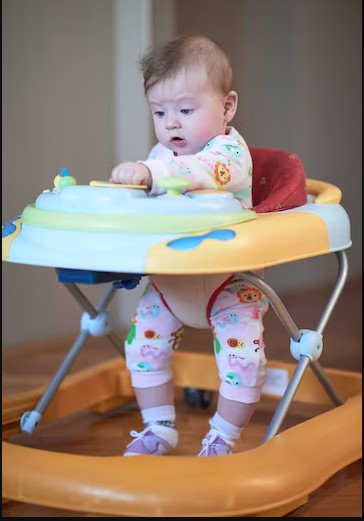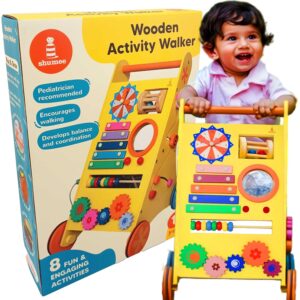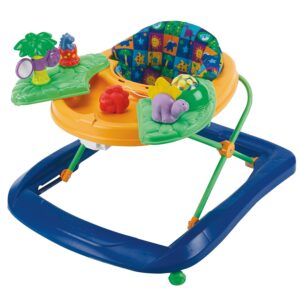Baby walkers have been a popular tool for helping babies gain mobility and independence as they begin to explore their environment. However, many parents often ask, “Are Baby Walkers Safe?” This question has been a topic of debate for many years. While advancements have been made in designing safer models, it’s essential to understand the potential risks and take proper precautions when using them.
In 2025, the question remains: Are Baby Walkers Safe? Compared to older models, baby walkers today are generally safer, but they still come with certain safety concerns. Here’s an in-depth look at the safety aspects of baby walkers today:
Risks Associated with Baby Walkers
Even with improvements in design and safety features, parents must ask themselves, “Are Baby Walkers Safe for everyday use?” These devices can still pose potential risks, including: check out our
Best Baby Walker Tips in 2025
Falls and Tipping Over
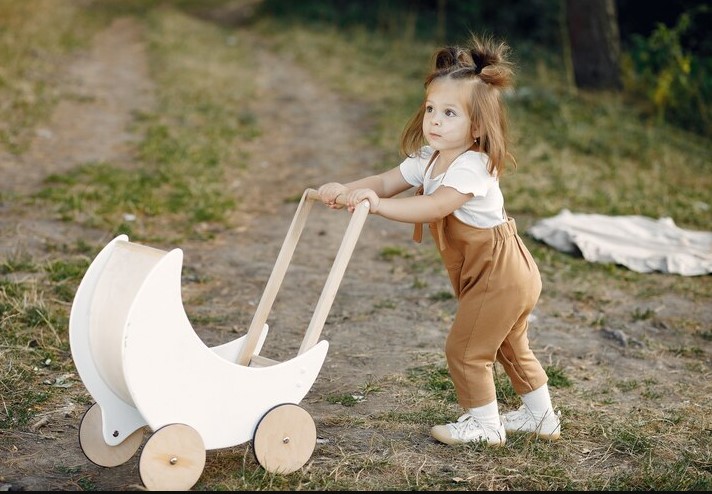
- Stairs: The biggest concern when asking “Are Baby Walkers Safe?” is the risk of a baby rolling down the stairs, especially when the walker is not designed with anti-slip features or if used on uneven surfaces.
- Tipping: Walkers that aren’t balanced or have a top-heavy design can tip over easily, especially if your baby leans forward or makes sudden movements.
Speed and Lack of Control
When considering “Are Baby Walkers Safe?” it’s important to note that walkers with wheels can allow babies to move faster than they can control. This could lead to bumps, crashes, or even collisions with furniture and other obstacles. Babies may also roll toward dangerous areas like hot stoves, fireplaces, or sharp objects.
Developmental Concerns
Some experts believe that baby walkers might delay walking development, raising concerns about “Are Baby Walkers Safe?” Babies may rely on the walker’s support instead of learning to balance and strengthen their own muscles.
Walkers can also encourage babies to use their legs in an unnatural way, potentially leading to poor posture or a delay in walking skills.
How Safe Are Baby Walkers in 2025?
In 2025, advancements have led to notable safety improvements, but parents still wonder, “Are Baby Walkers Safe enough?” Manufacturers now prioritize design features that reduce some of the traditional risks. Here are the key safety features in modern baby walkers:
Enhanced Safety Features
- Locking Mechanisms: Many walkers come with lockable wheels or wheel brakes to prevent uncontrolled movement. Some models also allow you to limit the speed or direction the walker can roll in, minimizing the risk of accidents.
- Anti-slip Wheels: Walkers now often have anti-slip or non-skid wheels, which prevent the walker from sliding on smooth surfaces and provide better stability.
- Stair Safety: Newer models are designed to prevent rolling down stairs, with wider bases or safety mechanisms that stop the walker from going over the edge.
Height Adjustability and Comfortable Seats
- Adjustable Height: Many modern walkers come with adjustable height settings, which means you can customize the fit as your baby grows. This ensures the walker is used correctly, reinforcing the question, “Are Baby Walkers Safe when adjusted properly?”
- Comfortable Seat Design: The padded and ergonomic seat designs of 2025 baby walkers support proper posture and reduce the risk of discomfort or injury during use.
Supervision is Key
While safety features have improved, the most important factor in answering “Are Baby Walkers Safe?” is constant supervision. Never leave your baby unattended in a walker, as there are still risks of accidents, particularly if the baby moves too quickly or near dangerous objects.
Best Practices for Using a Baby Walker Safely
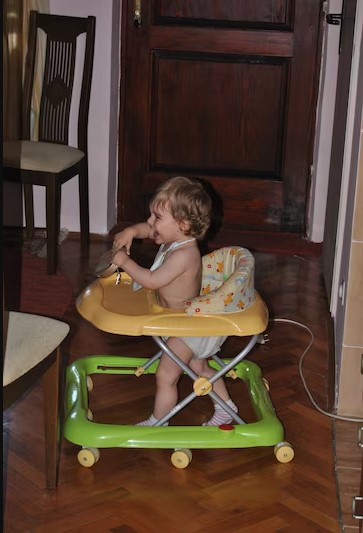
Current Offer – 1,998
MRP – 4,199
To ensure that “Are Baby Walkers Safe?” applies to your baby’s experience, follow these safety guidelines:
- Always Supervise Your Baby: Never leave your baby unattended in a walker, even for a few seconds. Ensure that they are always within your line of sight.
- Use in Safe, Baby-Proofed Areas: Only use the walker on flat, smooth surfaces. Avoid areas with stairs, ramps, or uneven floors. Baby-proof the environment by removing hazards like sharp objects, electrical cords, and open doors.
- Limit Use Duration: Use the walker for short periods only—typically 10-15 minutes at a time—so your baby doesn’t become too reliant on the walker and develops their motor skills naturally. Overuse of the walker may delay other developmental milestones.
- Choose a Safe, Modern Walker: Opt for walkers with modern safety features, such as wide bases, anti-slip wheels, and height adjustability. Ensure it is certified for safety and meets the necessary safety standards.
Conclusion: Are Baby Walkers Safe in 2025?
The question “Are Baby Walkers Safe?” has evolved over time. In 2025, baby walkers are much safer than in previous years, thanks to innovations like better safety features, more comfortable designs, and added functionality. However, they are not entirely risk-free. The key to using a baby walker safely is to follow safety guidelines, limit its use to supervised environments, and avoid overuse. If you use the walker appropriately and select a high-quality model with modern safety features, it can be a fun and useful tool for your baby’s development.
Despite these improvements, alternatives like activity centers that don’t involve mobility might be a safer option for parents concerned about the risks of walkers. Ultimately, the choice comes down to your baby’s development stage and how much supervision you’re able to provide. By following the right precautions, parents can feel more confident in answering “Are Baby Walkers Safe?” for their little ones.

